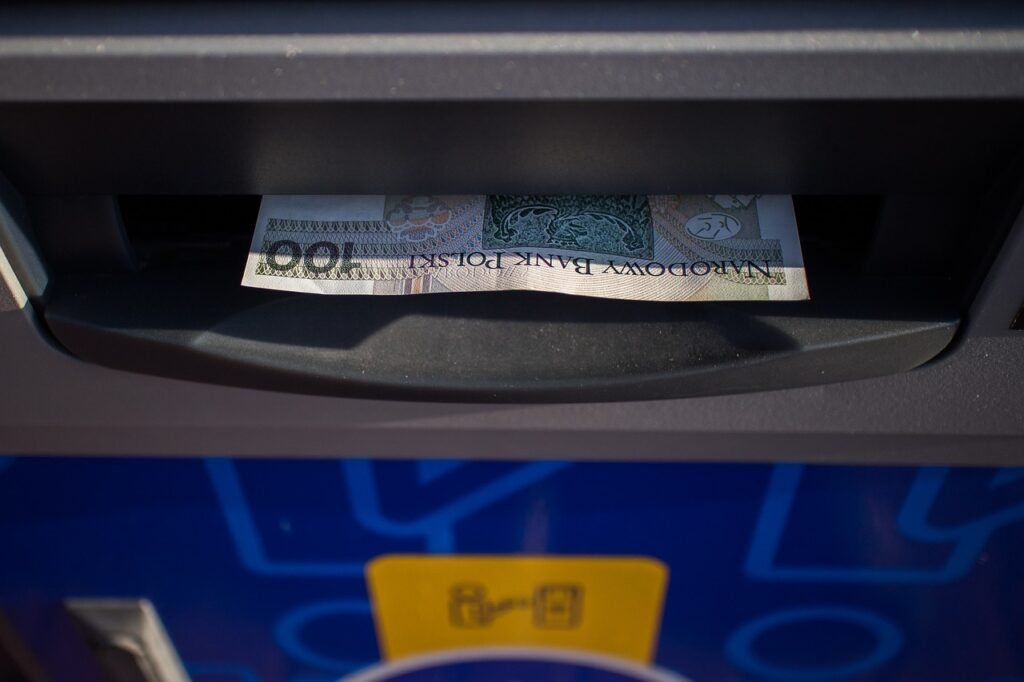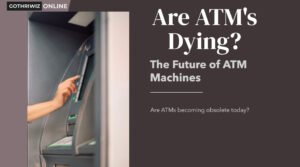In 2025, ATMs will compete with digital payments by serving businesses and consumers who rely on cash for convenience, budgeting, or privacy. While mobile payments and credit cards dominate, many prefer cash to avoid fees, maintain privacy, or control spending. Small businesses like barbershops, nail salons, laundromats, food trucks, and convenience stores use cash to cut processing costs. ATMs also remain vital in areas with limited banking services or unreliable internet, ensuring cash access. If you’re wondering how to profit, check out How to Make Money with ATM Machines for a step-by-step guide.
Profitable ATM locations in the U.S. include high-foot-traffic urban centers and tourist destinations. Some of the best locations are Times Square (New York), the Las Vegas Strip (Nevada), and Miami Beach (Florida)—all of which see millions of visitors annually, many of whom use cash for small transactions. Other high-performing ATM locations include gas stations, nightclubs, strip clubs, casinos, liquor stores, and convenience stores in cities such as Los Angeles, Houston, and Chicago, where cash transactions remain common. To learn how you can scale your ATM business, read How to Earn $5,000 per Month from ATMs for expert insights.

Despite the shift toward digital payments, approximately 18-20% of the U.S. population still primarily uses cash for daily purchases. Additionally, studies show that cash usage is higher among lower-income groups, senior citizens, and individuals who prefer cash for security reasons. If you’re ready to start your ATM business, explore This ATM Investment Opportunity to get started today.
Table of Contents
Profitability of the ATM Business in 2025
The success of an ATM business is not just about owning a machine; it’s about positioning it in the right place, ensuring a steady flow of transactions, and optimizing surcharge fees to maximize earnings. While some ATM owners struggle to make $300 a month, others effortlessly rake in $3,000. The difference lies in three critical factors: location, transaction volume, and surcharge fees.
Location is the lifeblood of an ATM’s profitability. Picture an ATM placed in the quiet corner of a suburban gas station where foot traffic is minimal. Now compare it to an ATM standing proudly at the entrance of a packed nightclub, where people need cash to cover charges, drinks, and tips. The contrast is striking. ATMs generate income when placed where cash is not just an option, but a necessity. High-traffic locations such as shopping malls, casinos, nightclubs, strip clubs, festivals, convenience stores, and truck stops ensure constant usage. The key is to position the machine where people either prefer or are required to use cash, increasing both the frequency and urgency of withdrawals. To learn How to Make Money with ATM Machines, understanding the right locations is crucial.

Transaction volume is the next defining factor. An ATM’s revenue is directly tied to how many people use it daily. A poorly placed ATM might see only three to five transactions per day, barely scraping together $300 in a month. Meanwhile, a strategically located ATM, in a place with constant foot traffic and high demand for cash, could see 40 or more transactions daily. The difference is night and day. Locations such as bars, busy gas stations, and event venues naturally attract more people who depend on cash, ensuring that an ATM placed in such a spot sees a steady flow of users. If you’re serious about scaling your earnings, check out How to Earn $5,000 Per Month from ATMs for expert insights on boosting transaction volume.
Surcharge fees further define the earning potential of an ATM. Each time a customer withdraws money, the owner earns a fee, typically ranging from $2.50 to $4.00 per transaction. This may seem like a small amount, but over time, it adds up significantly. For instance, an ATM that processes only five transactions per day at a $2.50 surcharge will generate about $375 per month. However, an ATM in a prime location, averaging 40 transactions per day at a $3.00 surcharge, can generate over $3,600 monthly. The math is simple, but the impact is enormous. A well-placed ATM with a steady flow of transactions and optimized surcharge fees can become a money-making powerhouse with minimal effort. If you’re ready to dive into the ATM business and start earning, explore This ATM Investment Opportunity and take the first step toward financial freedom.
Ultimately, the gap between ATM owners earning $300 and those making $3,000 comes down to strategy. Those struggling at the lower end often place their machines in low-traffic areas, fail to research customer habits, and set their surcharge fees too low. Meanwhile, those who dominate the ATM business place their machines in cash-heavy environments, monitor and optimize transaction volumes, and set their fees at the perfect balance between customer affordability and profit maximization.
In ATMs, location is everything, volume is king, and fees are the finishing touch. The right combination of these three factors turns an ATM from a lifeless metal box into a steady stream of passive income. Those who understand this don’t just make money—they create a financial machine that works for them around the clock.

Achieving $1,000 Monthly Income from an ATM Business
To attain a monthly income of $1,000 from an ATM business, consider the following strategies:
- To find the best spots, consider walking through different locations at various times of the day to observe traffic flow. Additionally, talking to business owners about their customers’ payment preferences can give insights into whether an ATM Business would be beneficial. If you’re looking for an in-depth guide on choosing the perfect location, explore How to Make Money with ATM Machines for expert insights.
- Strategic ATM Placement: The Key to Maximum Profits– Placing an ATM Business in the right location is the most crucial factor in determining its profitability. The ideal location should have high foot traffic, a strong demand for cash transactions, and limited competition. Places like bars, nightclubs, gas stations, shopping malls, laundromats, casinos, and convenience stores are prime choices because people frequently need cash there. It’s important to assess the average daily transactions in these areas. A well-placed ATM Business can generate 6 to 10 transactions per day, with surcharge fees of $2.50 to $3.00, leading to a monthly revenue of $450 to $750 per machine.
- Negotiating Surcharge Fees for Maximum Profitability: Setting the right surcharge fee in your ATM Business is an art. While you don’t want to overcharge and discourage users, you also don’t want to set fees too low and limit your profits. The key is to strike a balance between competitiveness and profitability. A typical surcharge ranges between $2.50 and $3.50, but in high-demand areas like nightclubs or casinos, fees can go as high as $5 per transaction without driving users away.
One way to maximize earnings in your ATM Business is by analyzing the local market. Research competitor ATM fees in your chosen area and match or slightly undercut their pricing to attract more users. Additionally, discussing surcharge splits with business owners is crucial. Many establishments will allow you to install an ATM Business in exchange for a portion of the surcharge revenue, typically $0.50 to $1.00 per transaction. - However, if the location already benefits significantly from the ATM Business—such as increased sales from cash-paying customers—you might negotiate a lower cut or avoid revenue sharing altogether.
For a detailed breakdown of how surcharge fees impact profitability, read How to Earn $5,000 Per Month from ATMs and implement the best pricing strategies for your locations. - Expanding Your ATM Business for Higher Earnings: If you want to scale your ATM Business, owning multiple ATMs is the fastest way. Rather than relying on a single machine for income, expanding to two or three locations can significantly boost your revenue and reduce the risk of underperformance at any one spot. For instance, an ATM Business generating $500 per month means that managing two ATMs can easily reach your $1,000/month goal, and adding a third one could push your earnings even higher.
To expand successfully, start by reinvesting a portion of your ATM Business profits into acquiring and placing additional machines. Focus on high-performing locations first, and once a machine proves profitable, duplicate the strategy in similar areas. Another approach is partnering with local business owners who are interested in having an ATM Business installed but don’t want to manage them. Offering profit-sharing agreements can help secure premium locations without upfront leasing costs.
If you’re ready to take your ATM Business to the next level, check out This ATM Investment Opportunity to scale your operations profitably. - Effective Cash Management to Prevent Downtime in Your ATM Business: An empty ATM Business is a useless ATM Business. If your machine runs out of cash, customers will turn elsewhere, reducing both your transactions and reputation. To prevent this, monitor cash levels regularly and schedule refills based on transaction trends. High-traffic locations may require daily or every-other-day refills, while lower-volume ATMs may need servicing only once a week.
One efficient way to manage cash in your ATM Business is by keeping detailed records of withdrawals and usage patterns. This allows you to predict peak times and ensure the ATM Business is always stocked when needed most. Additionally, using ATM cash-loading services can be a smart choice for owners who operate multiple machines but don’t want to handle large amounts of cash themselves.
Another key aspect of ATM Business cash management is setting the right withdrawal limits. For example, in high-traffic areas, setting a maximum withdrawal limit of $200 to $300 per transaction ensures that funds last longer between refills while still catering to customer needs. - Regular Maintenance for Reliable ATM Business Performance: A malfunctioning ATM Business is lost revenue waiting to happen. Regular maintenance ensures smooth operation, prevents technical failures, and keeps customers happy. Simple checks, such as verifying receipt paper availability, cleaning the cash dispenser, and updating software, can significantly reduce downtime.
Additionally, setting up a remote monitoring system allows you to track machine performance in real-time. Some modern ATMs notify you of issues like low cash, printer errors, or card reader malfunctions, allowing quick fixes before they impact users. It’s also essential to schedule periodic inspections with a technician to ensure the ATM Business hardware remains in optimal condition.
By keeping your ATM Business well-maintained, you boost reliability, increase repeat usage, and build customer trust, ultimately leading to higher transaction volumes and profits. - Marketing and Partnerships: Driving More Transactions for Your ATM Business: Simply placing an ATM Business isn’t enough—you need to actively promote its presence. One of the most effective ways to increase usage is through strategic partnerships with business owners. Many store owners appreciate having an ATM Business because it encourages cash spending, reducing their credit card processing fees. Offering a small referral bonus or revenue-sharing deal can incentivize businesses to promote your ATM Business to their customers.
You can also use signage and in-store promotions to attract more users. Placing signs at store entrances, cash registers, and checkout counters lets people know cash is available on-site. Additionally, offering incentives like small discounts for cash-paying customers can encourage ATM Business withdrawals.
In high-traffic areas, listing your ATM Business on Google Maps can help potential users locate your machine easily. Digital marketing strategies, such as social media promotions and running ads targeting people searching for “nearest ATM,” can also drive more foot traffic to your machines.

Considerations and Challenges
While the ATM business can be profitable, it’s essential to acknowledge potential challenges:
- Declining Cash Usage: In certain regions, there’s a noticeable decline in cash usage due to the rise of digital payment methods. For example, Australia has experienced a significant reduction in the number of bank branches and ATMs, with their numbers halving in the past seven years. news.com.au Staying informed about local payment trends is crucial to ensure the viability of your ATM placements.
- Operational Costs: Expenses such as machine maintenance, cash replenishment, and compliance with regulatory requirements can impact profitability. Conducting a thorough cost-benefit analysis before establishing an ATM is advisable.
- Security Concerns: ATMs can be targets for theft and vandalism. Investing in security measures and choosing safe locations are vital to protect assets and maintain user confidence.

In 2025, the most profitable ATM Business locations are those with high foot traffic and a strong reliance on cash transactions. Bars, nightclubs, gas stations, dispensaries, convenience stores, and strip malls are prime locations where cash is frequently used. Casinos, truck stops, and event venues also see high transaction volumes as people prefer carrying cash for small purchases or tipping. Placing an ATM Business in these areas ensures consistent usage, translating to higher monthly revenue.
Efficient ATM Business operations involve monitoring cash levels, regular maintenance, and timely refills to minimize downtime. Implementing remote monitoring software allows owners to track transaction activity, detect malfunctions, and predict cash refill needs in real-time. Partnering with ATM cash-loading services or hiring a trusted courier can streamline refills for multiple machines.
For a complete guide on running a profitable ATM Business, explore How to Make Money with ATM Machines and How to Earn $5,000 Per Month from ATMs. If you’re looking to scale your ATM operations, check out This ATM Investment Opportunity for expert insights.






Pingback: Are ATM Machines Really Dying In 2025? Future Of ATM's